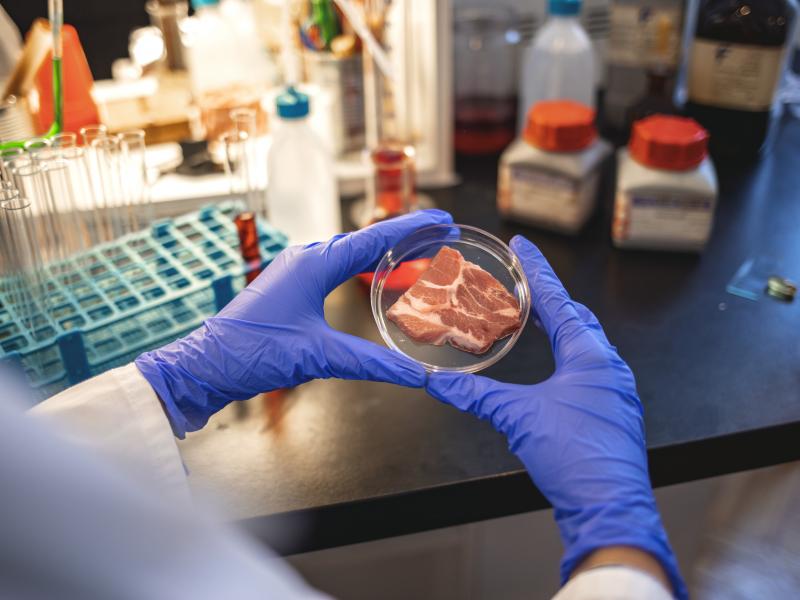Cultured Meat

Description of the innovative solution
Cultured meat, also known as in vitro, is an environmentally sustainable solution to meat production. It is no-kill product produced in laboratories that tastes just like meat. The cells are taken from biopsies of live animals and the 'meat' is supplemented with plant nutrients. This is causing an agricultural revolution, as this solution tastes very real and similar to meat. Vegan and vegetarian diets are becoming more accessible and desirable as this solution floods the market. Beef, specifically, is one of the major contributors to greenhouse gas emissions, producing roughly 60 kilograms of...
Cultured meat, also known as in vitro, is an environmentally sustainable solution to meat production. It is no-kill product produced in laboratories that tastes just like meat. The cells are taken from biopsies of live animals and the 'meat' is supplemented with plant nutrients. This is causing an agricultural revolution, as this solution tastes very real and similar to meat. Vegan and vegetarian diets are becoming more accessible and desirable as this solution floods the market. Beef, specifically, is one of the major contributors to greenhouse gas emissions, producing roughly 60 kilograms of emissions per 1 kilogram of meat. Therefore, cultured meats hold the unique potential to limit livestock farming cutting down mass methane and carbon emissions. Common brands such as Impossible Food and Beyond Meat are becoming more popular and normalized in society.
Examples and additional resources
Real-world examples
See this solution in action in different contexts and settings around the world
Mosa Meat
Mosa Meat
Mosa Meat
Additional resources
Learn more about this solution through studies, articles, business cases, and other information
The Business of Cultured Meat
Contacts
Connect to others working on and with this solution around the world
Pathways to uptake
Engage with our “backcasting tool” to imagine and design “pathways to uptake” for this solution in your setting.
This process involves defining a future vision of this solution being used in your context, and then working “backwards” to identify necessary steps to achieve this vision by 2030. Going through this exercise as an individual or with a team can help to clarify the WHAT/WHEN/HOW of moving a solution (or package of solutions) towards having major impact. We hope these pathways will inspire outside-of-the-box thinking, creative approaches, and actionable concrete steps to move ideas into action.
Pathway builder
Explore pathways for this solution
Be the first one and add a pathway for this solution!